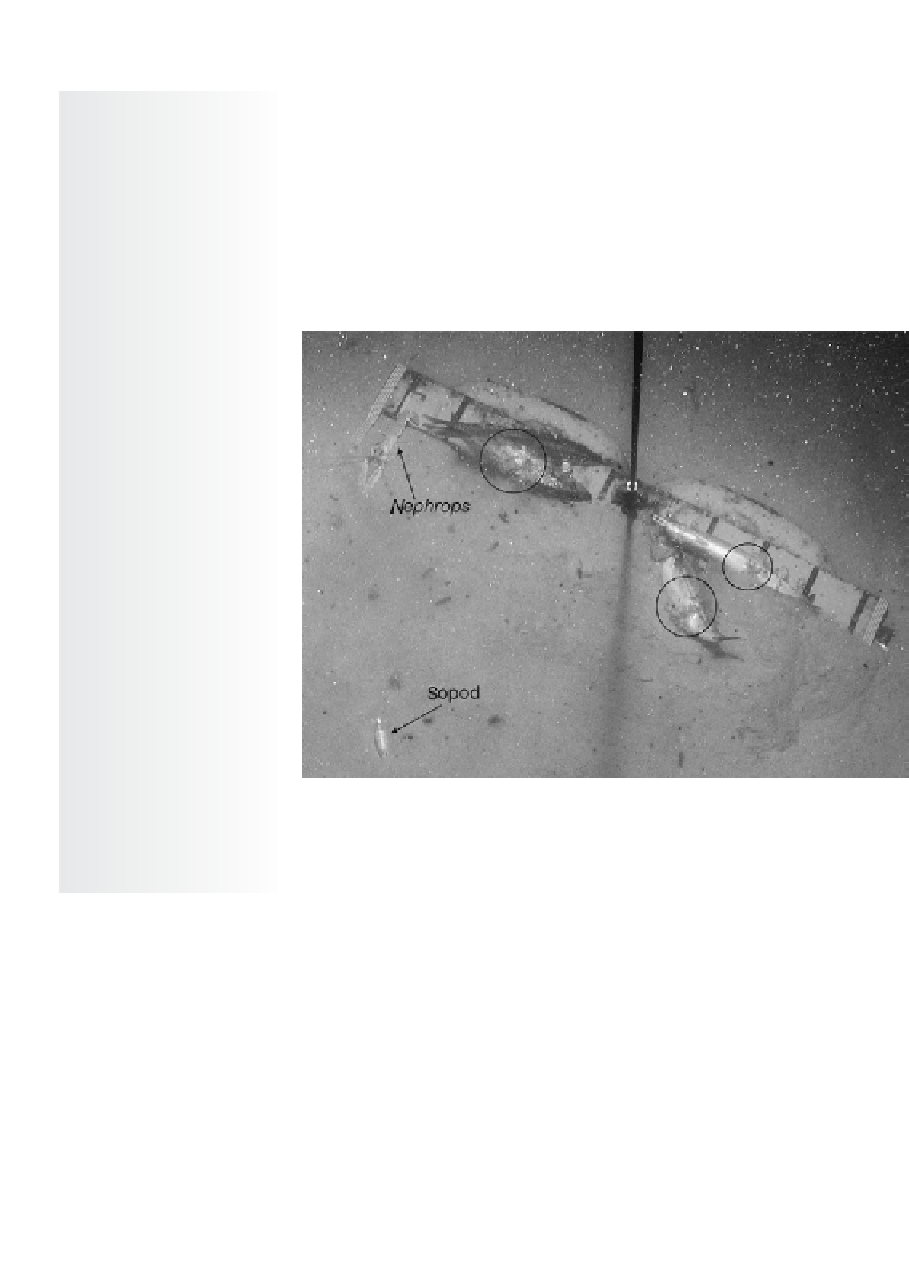Geoscience Reference
In-Depth Information
shows the bait, along with a nephrops lobster (upper left). The reddish animal in
the lower left is an isopod. If you look carefully at the mackerel bait you can also
see dozens of isopods attached to the fish.
The isopods were obviously able to detect the bait, swim to it and hang on to it
despite tidal flows of over 0.5 m s
1
. Isopods are also known to parasitise live fish.
The observation reminds us that the fate of carbon that reaches higher in the marine
food web is eventually to be consumed and recycled.
Figure B5.3.
An image of the seabed of the Celtic Sea showing isopods feeding on mackerel
bait. The circles indicate groups of feeding isopods. Image provided by In
˜
igo Martinez,
Marine Scotland.
5.2.4
The role of grazing in the structure of phytoplankton communities
We can now return to a problem that initially appeared when we considered the role
of phytoplankton cell size in the uptake of nutrients.
Equation (5.9)
shows that when
competing for nutrients there is a tremendous advantage to being small in the ocean.
So why do we see phytoplankton ecosystems that have a diverse spectrum of
cell sizes? In particular, how can large cells such as diatoms compete for nutrients
and grow in the ocean? We have seen that motility, either swimming or sinking, only
appears to confer an advantage in nutrient uptake for very large cells. The best case
would be a factor of about
100 increase in uptake for a cell or colony of diameter
1 mm, or a
m cell. However, such apparently large effects of
movement cannot compensate for the
10 increase for a 100
m
10
4
10
5
or
advantage that a 1
m
m




Search WWH ::

Custom Search